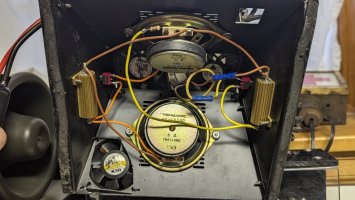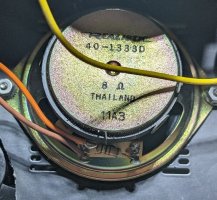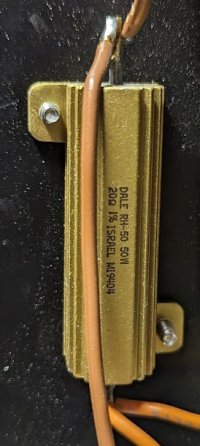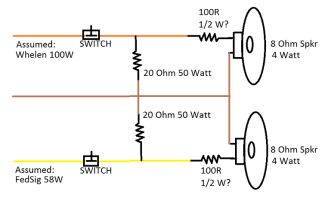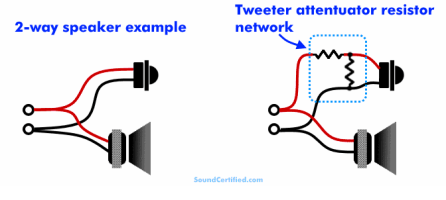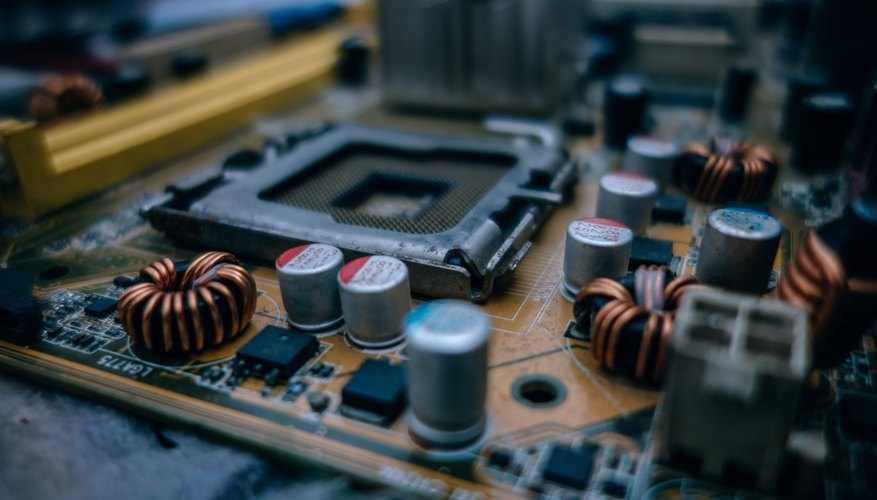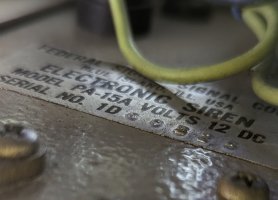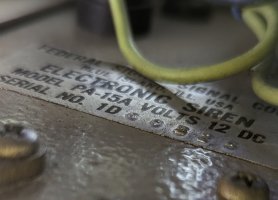JohnMarcson
Administrator
I have a "demo" setup to run two sirens "momentarially" at safe volume indoors. The setup uses a resister for each siren and has a red cutoff button on each side in case you want to mute one siren for a moment. I will upload a video later, but right now I have a 58w Federal from 1970 and a 100w Whelen from 1980 installed (the 5 switches between the sirens don't do anything at this time). Before any cooling the 100w side was heating up to 235°F internally (over 200°F external housing) and the 58w side was heating up to 195°F internally (over 170°F externally). At that point (around 6-10 min) there would be smells and sounds of component damage. I wanted to see if I could run them longer with some cooling, so I added two intake fans and one exhaust on the side of the 100w siren's resistor. After intake fans at the top and an exhaust fan on the 100W side I got things under control and able to run continuously, although I wouldn't risk a pricey or new siren on the setup. I am still messing around with some heat sinks and other resistors. For now, the 100w one is down to approx. 180°F internally and the 58w down to approx. 160°F internally with steady usage (the numbers top out at 10 min and didn't change after another 10). That translated to external housing temps that were significantly lower as well. Here is the setup and the results.
Setup
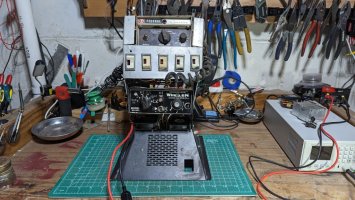


Intake Fans
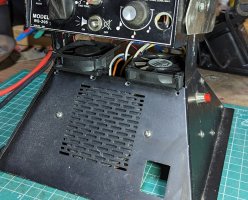
Exhaust fan behind the 100w side.
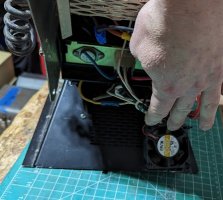
Airflow concept (note air exhausts around the speakers too).
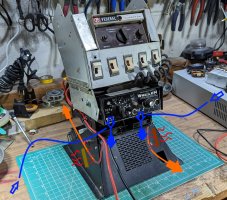
Some thermal images after running for 10 minutes. The 100w Whelen uses the resistor on the Left when facing the unit (the one with the exhaust fan behind it).
100w Whelen side (external), 160°F max hold temp

58w Federal side (external) 125°F hold temps
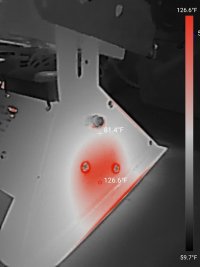
100w Whelen side (internal) 190°F approx. hold temps
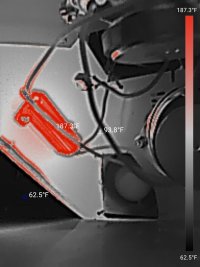
58w Federal side (internal) 160°F Approx. hold temps

Both with the base lifted more
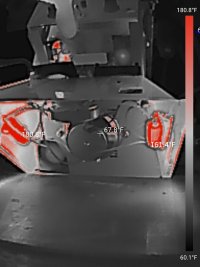
Setup



Intake Fans

Exhaust fan behind the 100w side.

Airflow concept (note air exhausts around the speakers too).

Some thermal images after running for 10 minutes. The 100w Whelen uses the resistor on the Left when facing the unit (the one with the exhaust fan behind it).
100w Whelen side (external), 160°F max hold temp

58w Federal side (external) 125°F hold temps

100w Whelen side (internal) 190°F approx. hold temps

58w Federal side (internal) 160°F Approx. hold temps

Both with the base lifted more




